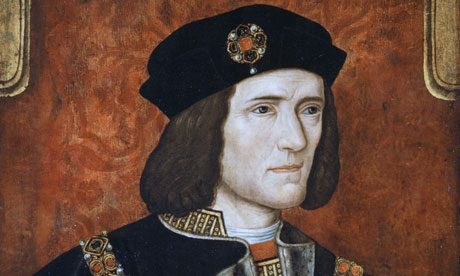Unless you paid very close attention to British history, you may not even have heard of the bloodiest battle in England:
Consider, for example, Towton — the bloodiest battle on English soil, in which most of our nobility and their retainers took part and in which 28,000 people are said to have died. Since the population of the time was not much more than three million, that’s the equivalent of a battle today costing the lives of half a million.
If you were on the wrong side, that was it: curtains. Even if you survived the fighting you faced the greater horror of being ‘attainted’. This meant being hanged, drawn and quartered, while your goods were confiscated and your heirs disinherited in perpetuity. Such was the fate of 60 Lancastrian knights and gentlemen (including 25 MPs — so it wasn’t all bad…) after Towton.
As with the Norman Conquest and the first world war, the war’s victims numbered disproportionately among the English upper classes. ‘Out of 70 adult peers during this period, over 50 are known to have fought in battles they had to win if they wanted to stay alive,’ notes Desmond Seward, in his superb The Wars Of The Roses. Entire noble families were exterminated. In one campaign alone — 1460 to 1461 — 12 noblemen were killed and six beheaded, over a third of the English peerage.
And there was no way of opting out. If you were one of the 50 or 60 great families, you were too prominent politically and socially, and your private army was too valuable, to permit your remaining neutral. This, in turn, meant that your myriad kinsmen, retainers, and hangers-on had to follow you into battle, whether they liked it or not. As a government spokesman told the House of Commons in 1475, ‘None [of us] hath escaped.’
Update: Colby Cosh sent along a link to this Economist article from 2010:
Towton is a nondescript village in northern England, between the cities of York and Leeds. Many Britons have never heard of it: school history tends to skip the 400-or-so years between 1066 and the start of the Tudor era. Visitors have to look hard to spot the small roadside cross that marks the site of perhaps the bloodiest battle ever fought in England. Yet the clash was a turning point in the Wars of the Roses. And, almost 550 years later, the site is changing our understanding of medieval battle.
In Shakespeare’s cycle of eight plays, the story of the Wars of the Roses is told as an epic drama. In reality it was a messy series of civil wars — an on-again, off-again conflict pitting supporters of the ruling Lancastrian monarchy against backers of the house of York. According to Helen Castor, a historian at Sidney Sussex College, Cambridge, the wars arose from the slow breakdown of English government under Henry VI, a man who was prone to bouts of mental illness and “curiously incapable” even when well. As decision-making under Henry drifted, factions formed and enmities deepened. These spiralling conflicts eventually drove Richard Plantagenet, Duke of York, to assert his own claim to the throne. York was named Henry’s heir, but he was killed in December 1460. His 18-year-old son, Edward, proclaimed himself king just before the battle of Towton.
That set the stage for a vicious fight. Edward had his father and brother to avenge. After killing him, Lancastrian forces had impaled York’s head on a lance and adorned it with a paper crown. Following years of skirmishes others had scores to settle, too. In previous encounters, efforts had been made to spare rank-and-file soldiers. At Towton, orders went out that no quarter be given. This was to be winner-takes-all, a brutal fight to the death.
The result was a crushing victory for the Yorkists and for the young king. Edward IV went on to rule, with a brief interruption, until his death 22 years later — a death that triggered the final stage of the conflict and the rise of a new dynasty under Henry Tudor. The recorded death toll at Towton may well have been inflated to burnish the legend of Edward’s ascent to the crown. Yet there can be little doubt it was an unusually large confrontation.
The archaeological details of the battlefield excavations are quite interesting. Gruesome, but interesting.




